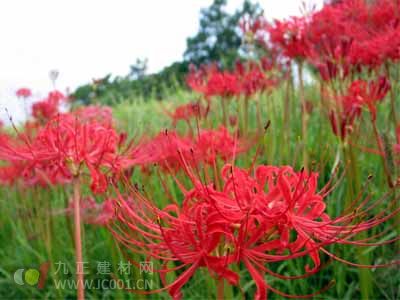Cultivation: Lycoris can be grown in open fields, potted in greenhouses, or cultivated in boxes and hydroponic systems. It is a versatile plant that adapts well to various growing conditions. Best Cultivation Time: In Shanghai, the ideal planting period is from May to November. This allows for better control over the flowering cycle. Avoid transplanting during winter or early spring after the leaves have fully developed. In colder regions, it's best to plant in spring. Most varieties thrive in warm climates with daytime temperatures around 24°C, and the maximum temperature should not exceed 30°C. Winter temperatures should remain above 8°C, with the lowest not dropping below 1°C, as this won't harm the plant’s growth. Optimal Growing Conditions: When planting, avoid burying the bulb too deep—just cover the top of the bulb with soil. A well-drained, slightly acidic sandy soil or loose potting mix works best. Apply an appropriate amount of base fertilizer before planting and water thoroughly. During the vegetative growth phase, keep the soil consistently moist but avoid waterlogging to prevent bulb rot. From the 20th day before blooming until the flowering stage, maintain proper watering to ensure even flowering and extend the bloom period. Planting Techniques: In the Shanghai area, Lycoris can be grown directly in the field. Small bulbs around the main bulb can be removed for propagation. The main bulb’s roots should be trimmed and dried for two days before planting. Ensure the planting area is elevated and well-drained; if not, create raised beds and drainage ditches to prevent water damage. Plant at a spacing of 15cm x 20cm, making sure the top of the bulb remains slightly exposed. Fertilize 2–4 times a year. The first application should be after the leaves fall and before flowering, using organic or compound fertilizers. For cut flowers, buds need pre-release treatment. The second feeding should occur just before the late October to early November flowering period. After harvesting, continue watering but reduce nitrogen and increase phosphorus and potassium to strengthen the bulbs. Once autumn ends, stop watering and fertilizing to encourage dormancy. Dig up the bulbs on a sunny, dry day, clean them, and store them after drying. Alternatively, you can remove the leaves and place the pots in a greenhouse for dormancy. Keep the temperature between 5°C and 10°C, ensure good air circulation, and maintain dry conditions to prevent rot. Another effective method is using 40cm x 60cm frames, typically holding 16 bulbs per basket. This approach simplifies transplanting and makes maintenance easier. Weeding is important during cultivation; herbicides can be applied, preferably after the leaves have fallen or after harvest. Potted plants are also a great option. Large bulbs that have been growing in the field for three years and measure 7 cm or more can be planted in one pot or grouped in larger containers. Plant shallowly, leaving 1/3 to 1/2 of the bulb above the soil. Water once after planting, keeping the soil slightly moist. Water again when new leaves appear. Apply liquid fertilizer every two weeks. Stop watering once the leaves become thick and mature in autumn. After sprouting from February to March, rotate the pot or replace the soil. The ideal potting mix consists of 2 parts peat, 2 parts garden soil, and 1 part perlite, along with a small amount of base fertilizer. During summer dormancy, reduce watering, and keep the soil moist in spring and autumn. Apply a diluted fertilizer every two weeks during the growing season. Lycoris prefers partial shade, avoiding direct sunlight in summer. In spring and autumn, keep it in a semi-shaded location. Strictly limit watering in winter and stop fertilizing entirely to support its natural rest period. Lycoris is a beautiful and resilient plant that can be grown in many different ways. Whether in the ground, in pots, or in specialized growing systems, it offers both aesthetic appeal and ease of care. With proper attention to planting time, soil conditions, and watering, you can enjoy its vibrant blooms year after year. Bestware Sensor Faucet Tap brings the fine design and high technology together in all areas of the product process beyond Pull Out Faucet , Commercial Faucet and Commercial Kitchen Faucet. With extensive range of components, we can offer a large selection of both standard Pre-rinse Faucet and custom Basin Tap units as well as flexible combination. Stainless steel is 100% recyclable and is comprised of over 60% recycled material, Bestware faucets are the perfect solution in the commercial and industry for better water quality and the circumvention of the development of deleterious substances and bacteria. No plating, no oxidizing, no rust, lead free. Sensor Faucet Tap,Pull Out Kitchen Taps,Best Pull Out Kitchen Taps,Pull Out Bathroom Faucet Bestware Hardware Production Co., Ltd. , https://www.bestwaremfg.com